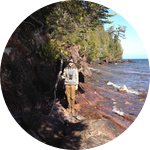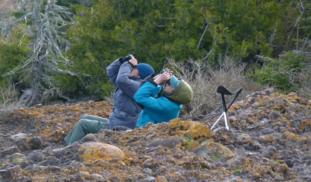Please wait...
About This Project
Flight calls are poorly understood vocalizations given by migrating warblers (Parulidae) that are thought to maintain flock unity. Calls vary between species but the exact role in communication between and among species is unknown. I propose to understand the function of flight calls by aurally and visually recording warbler migration. I will test if calls function in communication between members of the same species or mixed species flocks.
More Lab Notes From This Project

Browse Other Projects on Experiment
Related Projects
How do polar bears stay healthy on the world's worst diet?
Polar bears survive almost entirely on seal fat. Yet unlike humans who eat high-fat diets, polar bears never...
Uncovering hidden insect diversity associated with a likely undescribed gall-forming midge
Does a likely undescribed species of gall-forming midge (pers. comm. Ray Gagné) on Eriodictyon plants (Yerba...
Macrofungi of the California archipelago
The eight islands of the California Archipelago are a well-studied biodiversity hotspot — but we know almost...


